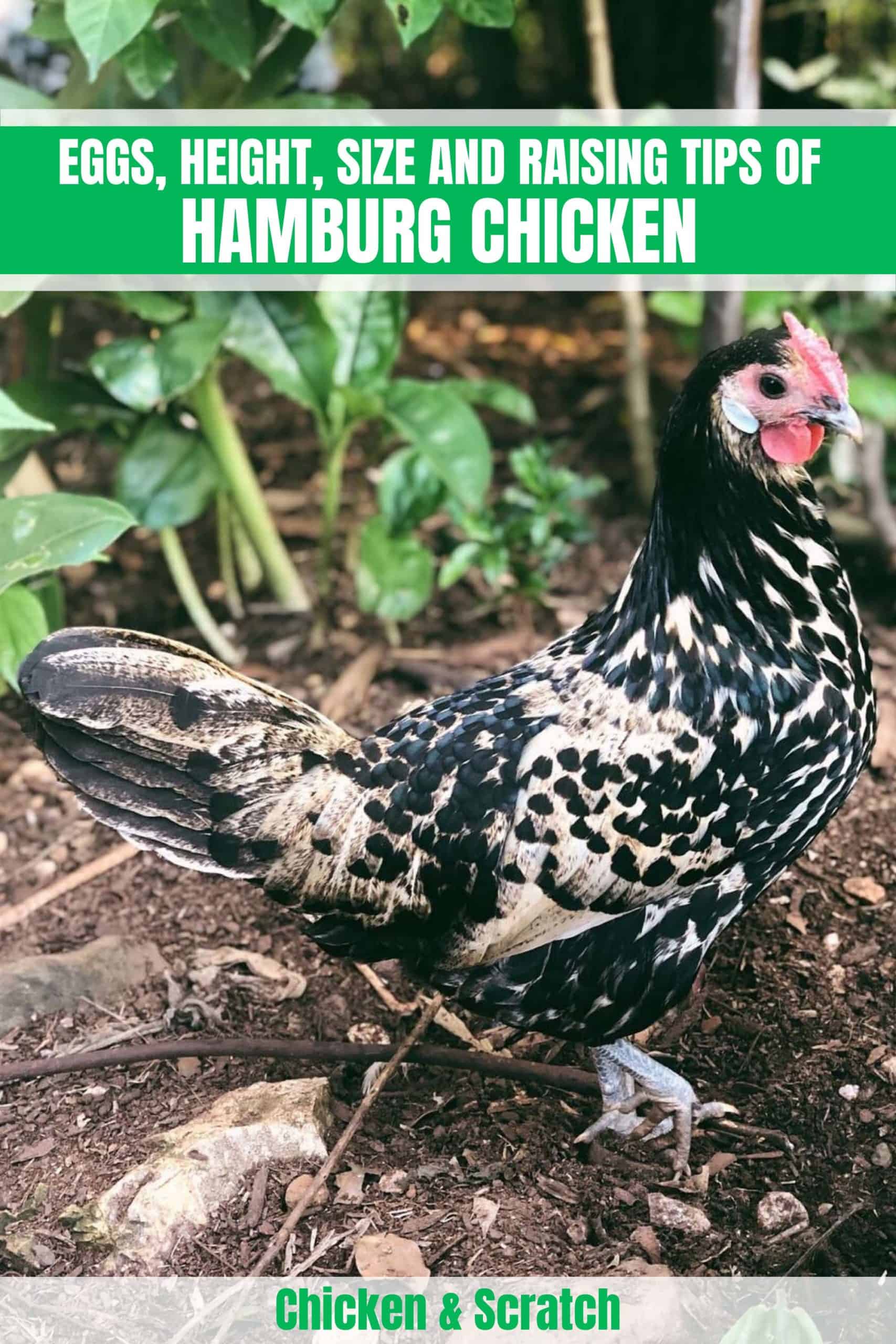The Hamburg chicken originated in Holland. Although the exact date of origin is not known, it is said to have arrived sometime prior to the fourteenth century. Hamburg is a breed of chicken that is small or medium in size. It is commonly known as a good egg-producing chicken.
This article will cover
- History of Hamburg Chickens
- Hamburg Chicken Breed Standard
- Personality & Temperament
- Hamburg Chicken Egg Laying
- Health Issues & Care
- Tips for Raising Hamburg Chickens
History of Hamburg Chickens
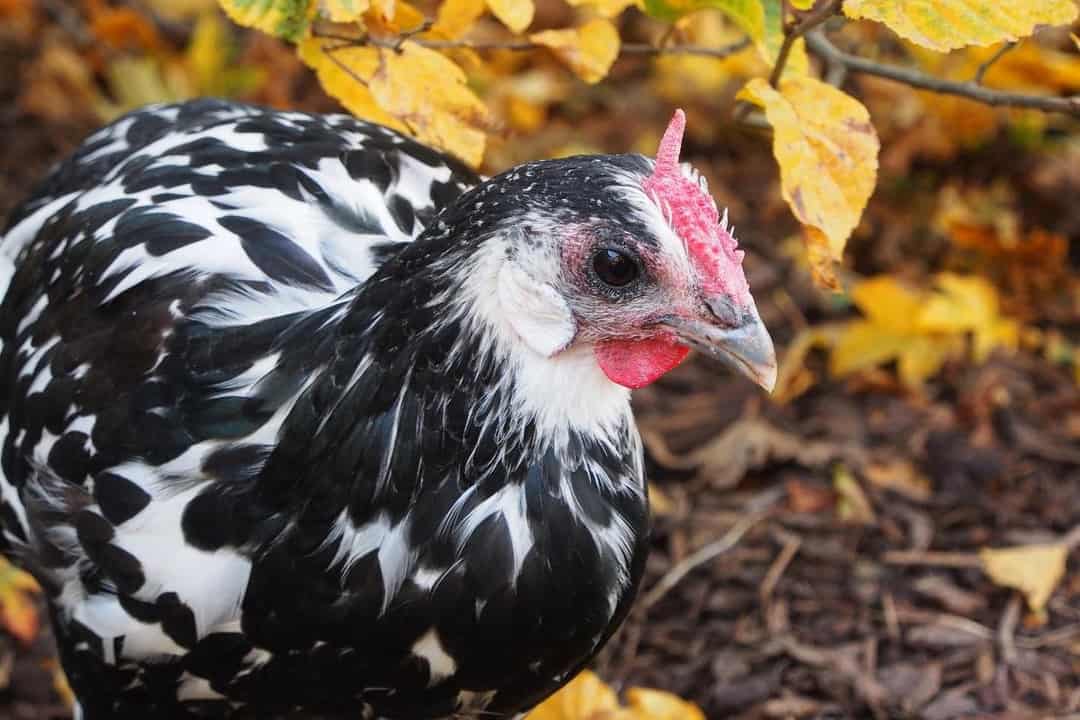
An interesting fact about the Hamburg breed of chickens is that they are credited with being involved with the first-ever chicken show. The first chicken show was a contest to settle the disagreement of whose rooster was the most exemplary and magnificent.
This show was said to be conducted around 1800 at a pub in England. The roosters competing are said to have been Hamburg chickens.
It is unclear when the Hamburg chickens were first originated, but records say they were discovered in Holland by the fourteenth century. The breed was first called the Hamburg chicken in the 1840s.
It is reported that the name was created due to the fact that the best birds came from Holland and from Hamburg. Before the chicken was officially coined with the name “Hamburg” it was known by other names. These names include:
- Pheasant fowl
- Pheasants
- Silver Pheasant fowl
- Yorkshire Pheasant
- Yorkshire
After the name Hamburg chicken became the official name, there were two select types of Hamburg chickens created. The Dutch developed the Silver Penciled and the Golden Penciled Hamburg chickens. After the breeding of the Penciled Hamburg, they made their way to England around 1785.
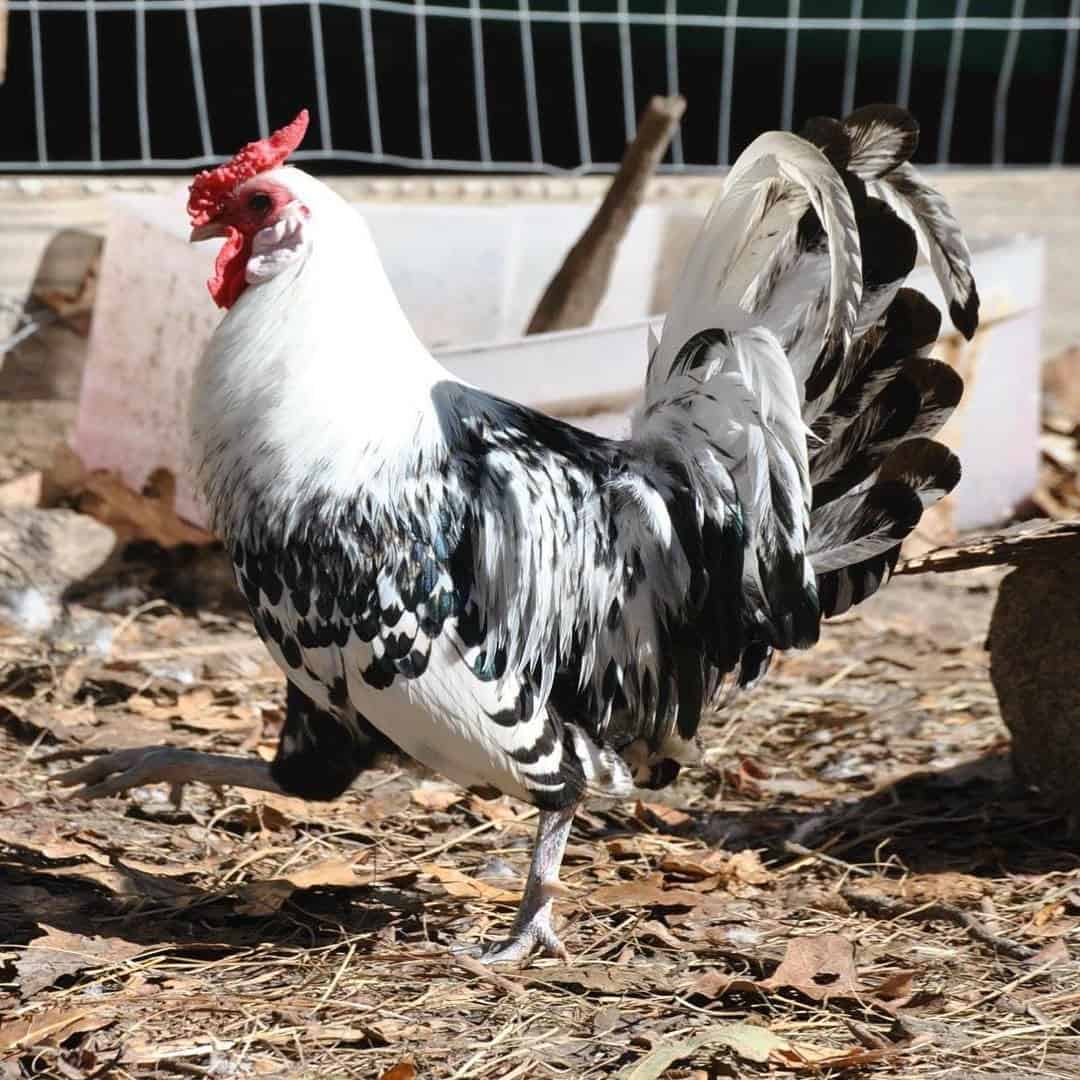
The English enjoyed the Hamburg breed and was able to create the following varieties:
- Black Hamburg
- Silver Spangled
- Golden Spangled
- White varieties
As time passed, the Hamburg chicken breed continued to evolve and make its way around the world. In the 1850s, Hamburg chickens made their way to America. This breed was very popular and desired in America because of its egg production capabilities.
All of the varieties listed above were accepted in America, but one variety stood out from the rest as the leading variety of Hamburg chickens in America. The White varieties were among the most popular in America. This is a vast difference from England, where the White varieties are not valued.
The American Poultry Association’s Standard of Perfection accepted the Hamburg breed in 1874. There is a bantam version available for this breed of chicken.
The Hamburg is listed in the Watch category. What does this mean? The Watch category in the American Livestock Breeds Conservancy Conservation Priority List aims to preserve rare breeds of American livestock.
| Feature | Hamburg Chicken |
|---|---|
| Purpose | Egg |
| Egg Color | White |
| Egg Size | Small to medium |
| Broody | No |
| Heat Tolerance | Yes |
| Cold Tolerance | Yes |
| Comb Type | Red-colored rose comb |
| Egg Production | Around 200 eggs per year |
| Chicken Skin Color | White |
| Life Span | 6-8 years |
| Adult Weight (Hen) | 3.5-4 lbs (1.6-1.8 kg) |
| Adult Weight (Rooster) | 4.4-5.5 lbs (2-2.5 kg) |
| Backyard Friendly | 3/5 |
Hamburg Chicken Breed Standard
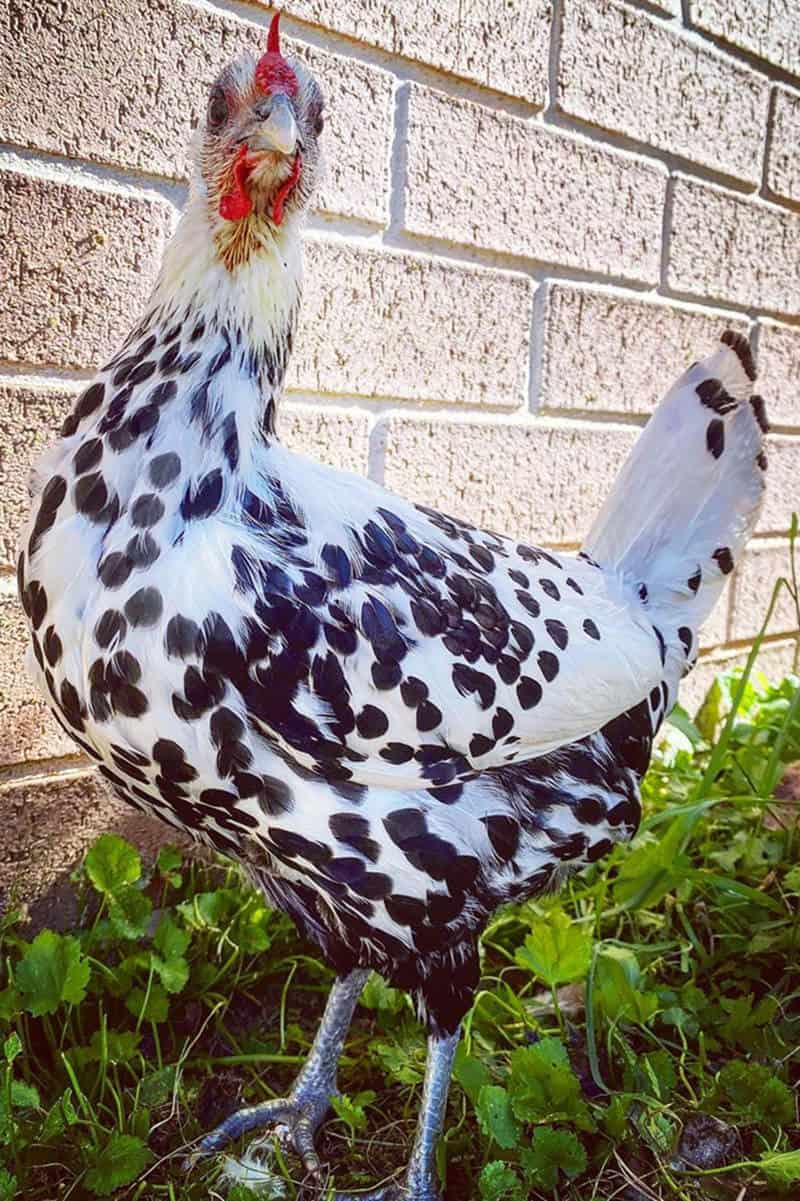
The Hamburg chicken breed is one of the most beautiful and alert breeds on the poultry list. This is a smaller breed, but extremely elegant and graceful. Hamburg chickens have strong flying skills. Some believe Hamburg is the result of a cross between common farm chickens and pheasants.
The features and characteristics of the Hamburg breed are beautiful. Characteristics of the Hamburg chicken breed include:
- They have long, compact bodies and wide flat shoulders.
- Well-rounded breast
- Long sweeping tail
- Large neatly tucked wings

As mentioned above, there are many different varieties of Hamburg chicken. This video gives a better portrayal of the different varieties of the breed. Although each variety is slightly different, all of the varieties have these traits in common:
-
- Red-colored rose combs
- The red-colored combs have small points. The comb gradually tapers into a long fine spike.
- Standard plumage
- White earlobes close to the head
- Red well rounded and smooth wattles. Medium-sized in roosters, small in hens
- Leg color can vary based on the variety. All Hamburg chickens have featherless legs
- Short and curved dark hornbeak
- Necks are fully feathered
- Skin color is white
- The standard Hamburg roosters weigh about 2 – 2.5 kg
- Hamburg hens weight about 1.6 – 1.8k
Hamburg is a unique breed that can be used in multiple areas. They are great egg layers and beautiful in appearance. Their magnificent plumage in an array of colors and stately bearing makes them amazing show birds. This breed of chicken is quite exquisite.
Personality & Temperament
Although the Hamburg chicken breed is beautiful in all of its varieties, it is not a people’s chicken. Hamburg is not the type of chicken that wants to be picked up and snuggled. They prefer to be left alone to spend time with each other. The Hamburg chicken is quite fast and will do what is needed to stay away from human contact. The breed loves to forage.
Friendly is not a characteristic that would describe the Hamburg chicken. If you must handle the chicken, it should be done during the night while they are roosting. There are some breeds of chicken that become broody, Hamburg hens do not become broody as often as other chicken breeds.
You should not expect a Hamburg hen to reproduce on its own. An incubator will most likely be needed if you want to expand your flock.
The Hamburg chicken does well in cold environments. They are excellent small birds that are used for both utility and beauty.
Hamburg chicks are strong, fast, and mature quickly. Hamburg chickens are not good for meat purposes because they have a grayish skin color. Even though they are not friendly with humans, they tend to be chipper birds.
Other terms that describe the temperament of the Hamburg chicken are:
- Wild
- Active
- Alert
- Flighty
- Restless
- Can’t handle confinement well
Hamburg Chicken Egg Laying

Hamburg hens are known to prefer nesting in hedgerows and have the habit of roosting very high in trees. Hamburg chickens are great egg layers. Their gift is not in the number of eggs per year they produce but in the ability to continuously lay a large number of eggs over several years. Below are facts about the Hamburg chicken and egg-laying:
- Pullets begin to lay eggs at about 4-5 months of age
- They lay around 200 eggs per year
- The eggs are small to medium-sized and have a white glossy shell
- In England, this breed is known as the “everyday layer”
Health Issues & Care
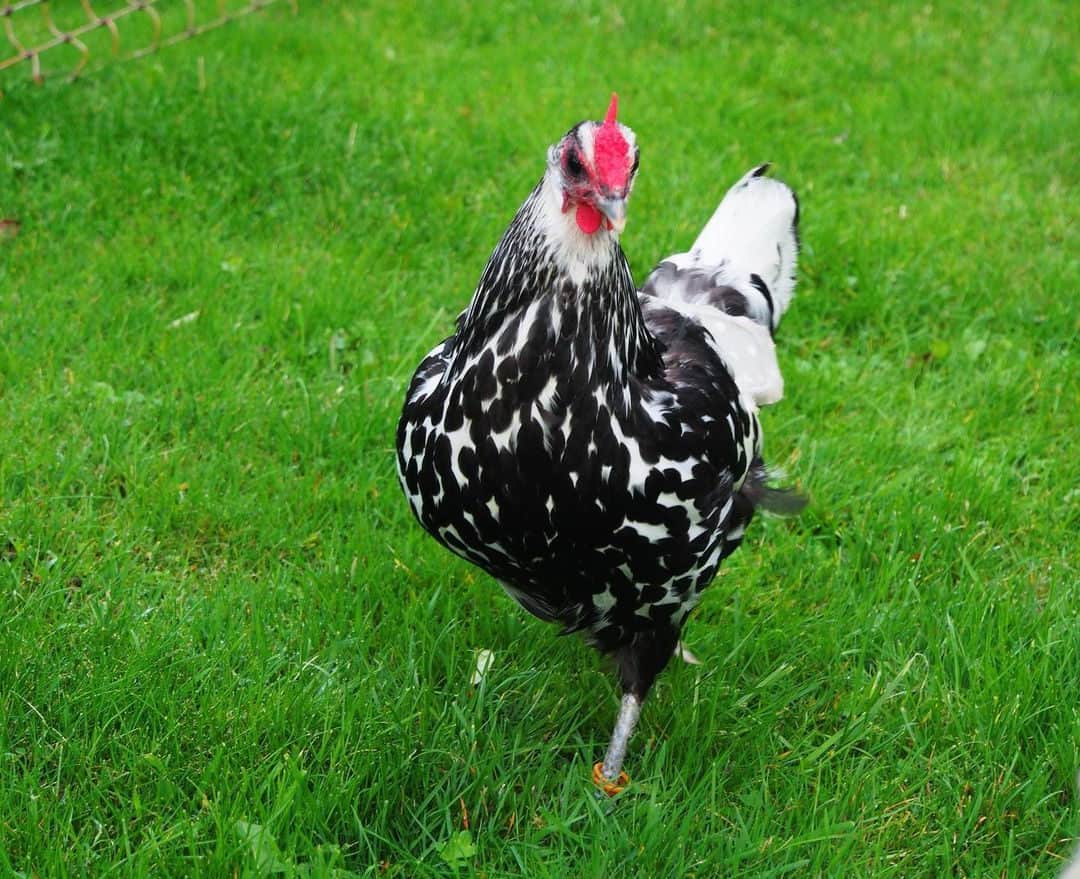
As with any chicken breed, the Hamburg chicken’s health and care should be the priority. There is not one known disease that is specifically common to only the Hamburg breed, but they are susceptible to diseases that commonly affect chickens. The most common chicken disease is Avian Influenza. Another common disease among chickens is Fowl Cholera.
Because the Hamburg chicken is such a prolific egg layer, it is important to make sure the breed is healthy. The following are warning signs that a chicken may be ill:
- Inactivity
- Abnormal droppings
- Discharges
- Closed Eyes
Immediate care should be given to chickens that experience any of these symptoms. Important daily care tasks include:
- Checking, cleaning, and refilling water
- Collecting Eggs
- Feeding the chickens quality food and nutrients
- Observing behavior
Hamburg chickens are vibrant birds and require great care. You should manage the bedding and freshen the nest box often. To cut down on sickness, disease, and health issues a clean environment is key.
Tips for Raising Hamburg Chickens

- Hamburg chickens can be loud. Where do you live? You should make sure your environment is suitable to raise Hamburg chickens
- The great thing about this chicken breed is that it can thrive in both warm and cold environments. In fact, the Hamburg chicken is cold-hardy and can maintain extremely cold temperatures. This will not be a factor when determining their housing situation.
- You have to decide if you will choose mature eggs, chicks, or adults to raise. Remember, the Hamburg breed matures quickly and begins to lay eggs around 4-5 months of age. This decision can be made based on your own personal goals and time commitment. Do you have the time to care for a mature egg or chick? If not, consider getting an adult Hamburg chicken
- A positive aspect of starting with chicks is that chicks tend to get along better than adult chickens
- Housing arrangements are important for Hamburg chickens. Remember, they do not bear confinement well. Make sure you have enough space to allow for free-range for this breed
- Adult chickens always need more room than chicks
- Limit human interaction and handling of Hamburg chickens. This breed does not like to be touched or picked up. Try to find ways to avoid handling the Hamburg chicken.
- A tip to save time and to ensure the safety of your Hamburg chickens is to buy a ready-made chicken coop. This is usually a one-time purchase
Summary
The Hamburg chicken is a popular, beautiful, and elegant bird. The origins of this bird date back to the fourteenth century with amazing evolution that has resulted in many different varieties. The Hamburg chicken is both a functional utility and an ornamental bird.
It has the best of both worlds. Hamburg has a phenomenal appearance with striking features, and it is also a prolific egg layer. This Hamburg chicken breed has been around for centuries and it continues to be one of the most popular and loved breeds of chickens.


Joseph Hudson has been raising chickens for over 15 years. In 2018, he completed the Agriculture & Natural Resources program at Mt. San Antonio College. He currently raises over 1400 chickens on his 7.5-hectare farm. He keeps sharing his experience on raising healthy and happy chickens on Chicken Scratch The Foundry.
